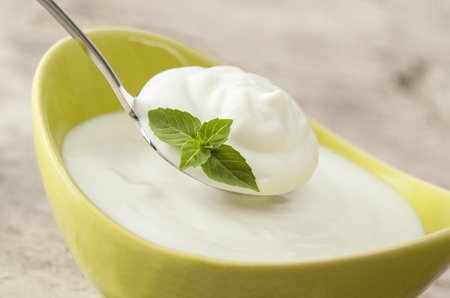
The quality of yogurt depends on two key factors – texture and flavour. These are sensory parameters which relate to the acceptance of all fermented milks generally.
The main factors affecting these two quality attributes are the starter culture, incubation temperature, processing conditions such as level of heat treatment and homogenization, and the compositional properties of the milk base.
When it comes to online monitoring of a fermentation process, with yogurt, the incubation time is the key parameter. Being a complex process, predicting the incubation step is very difficult and is controlled empirically. Knowing and defining the optimum incubation time is vital to minimise deterioration of the quality of the yogurt and in reducing manufacturing costs.
The end point of fermentation is defined by the pH value. This is a measure which is readily monitored and can be controlled relatively straightforwardly using acids and alkalies to regulate the pH. the approach is also cheap with minimal hardware cost, easily implemented and applied irrespective of changes in viscosity which occur.
As well as pH, both near infrared and electronic nose approaches have been tested.
Process Analytical Technology (PAT) has found its way into managing dairy fermentation. It is quality method providing timely analysis of critical quality parameters to improve, process efficiency, product quality and reduce cost.
The ideal PAT tool is an inline instrument that can monitor and measure process parameters simultaneously in real time while operating in a highly automated environment. Instruments must be of sanitary design, operate robustly within the full process cycle such as production and cleaning.
One of the main complaints at the moment though is how PAT has focused primarily on just analytical instruments, and the associated mathematical processing losing the original holistic view (Tajammal Munir et al., 2015). A more holistic approach is required to ensure a return to better process control for real-time product release (RTR).
When it comes to analytical technology then near infrared (NIR) spectroscopy comes to mind. In the dairy industry, near infrared (NIR) spectroscopy has been exploited as a laboratory analytical method, primarily off-line though, for compositional analysis of dairy products since the 1970s. Recent advances in NIR technology and instrumentation have widened its applications from a bench-top analytical instrument to a promising PAT tool for on-line and in-line implementation (Pyu et al., 2020).
When it comes to texture, monitoring the rheological properties of moving fluids such as diary concentrates and yogurts is paramount. The measurement of process viscosity is crucial in the monitoring and control of a variety of concentration processes in the dairy industry. Continuous monitoring of the rheological behaviour of the fluid can allow for optimisation of the process such as pumping, to avoid pump blockage and failure, evaporation to limit fouling and maximise water removal, and spray drying (avoidance of nozzle fouling) (O’Shea et al., 2019).
References
Labropoulos, A. E., Collins, W. F., & Stone, W. K. (1984). Effects of ultra-high temperature and vat processes on heat-induced rheological properties of yogurt. Journal of Dairy Science, 67(2), pp. 405-409 (Article).
Munir, M. T., Yu, W., Young, B. R., Wilson, D. I., Information, I., & Centre, C. (2015). The current status of process analytical technologies in the dairy industry. Trends in Food Science & Technology, 43(2), pp. 205-218. (Article)
O’Shea, N., O’Callaghan, T. F., & Tobin, J. T. (2019). The application of process analytical technologies (PAT) to the dairy industry for real time product characterization-process viscometry. Innovative Food Science & Emerging Technologies, 55, pp. 48-56 (Article).
Pu, Y-Y., O’Donnell, C., Tobin, J.T., O’Shea, N. (2020) review of near-infrared spectroscopy as a process analytical technology for real-time product monitoring in dairy processing. Int. Dairy J. 103 April 10623 (Article)


Leave a Reply